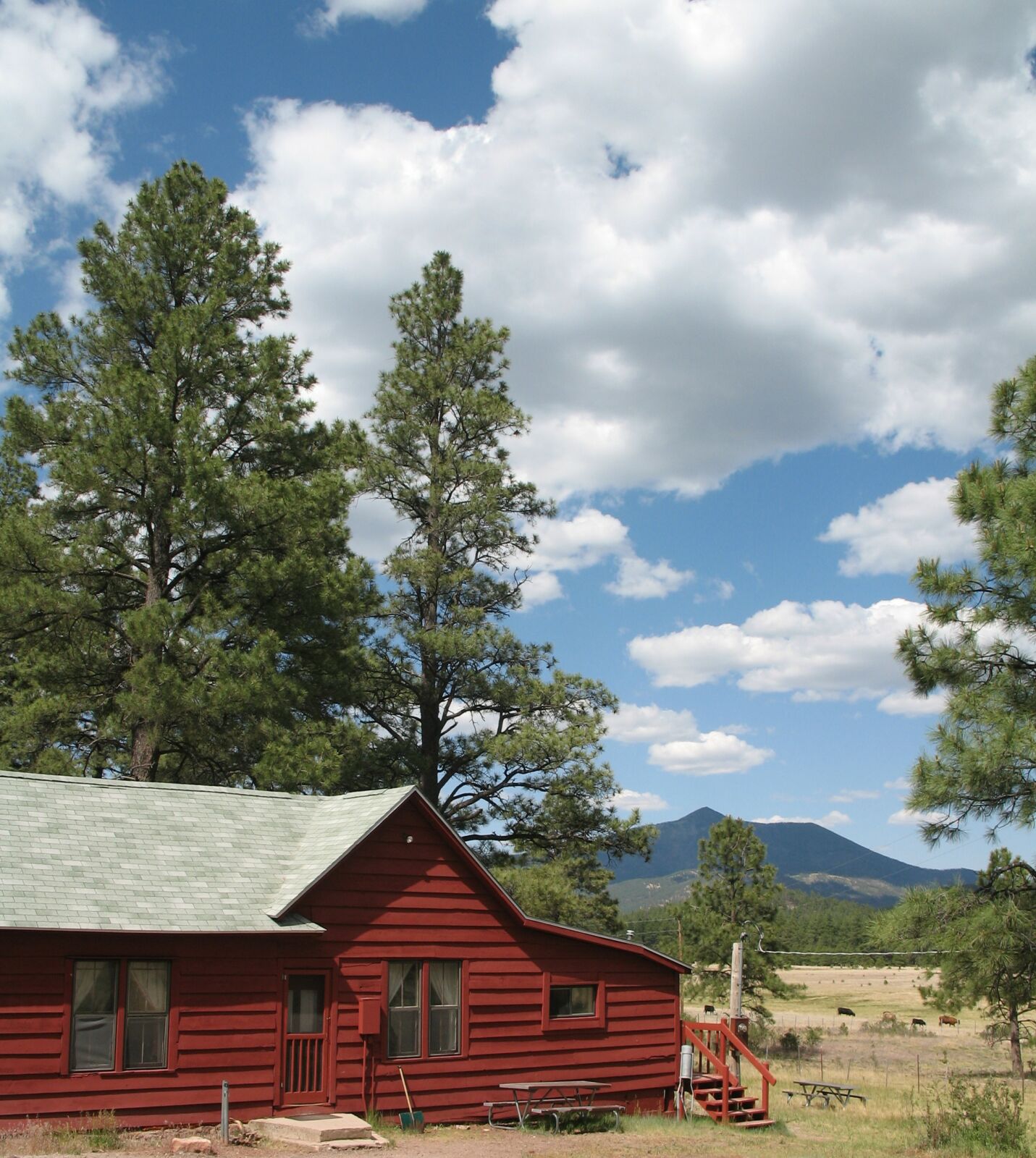Kaibab National Forest
The Kaibab National Forest is part of the largest contiguous ponderosa pine forest in the United States. Bordering both the north and south rims of the Grand Canyon, the Kaibab has the distinction of surrounding one of Nature's greatest attractions.
Elevations vary on the forest from 5,500 feet in the southwest corner to 10,418 feet at the summit of Kendrick Peak on the Williams Ranger District. You'll find enough breathtaking views, outstanding forest scenery, unusual geologic formations, and fun recreation activities to keep you satisfied for days!
Hikers and riders will find solitude, wildlife viewing and scenic views on this portion of the Kaibab National Forest . A few of the trails are best suited for the experienced hiker, but there are trails for a variety of levels of expertise and desire.
For many visitors, observing wildlife is one of the highlights of a trip to a National Forest. In the late afternoon and early evening, or during the early hours of the morning, you stand your best chance of catching a glimpse of some of the many different wild birds and animals that live on the Kaibab National Forest. These are prime feeding and watering times for elk, deer, antelope, turkey, hawks, owls, bear, bobcat, eagles, and javelina, all of which can be seen in some parts of the Forest.
All streams located on the Williams Ranger District flow only part of the year and are not suitable for sport fishing. Fishing occurs at lakes, many of which have developed campgrounds nearby. Some people do fish at a few of the larger tanks, including J. D. Dam, Perkins, Hells Canyon and Bar Cross Tanks.
Most boating on these lakes is done in conjunction with fishing activities. Lake surface areas vary from about 40 to 70 acres. They can accommodate small fishing boats, canoes, kayaks, and small (one- or two-person) sailboats or rafts.
There are many developed and undeveloped campsites and picnic spots in the Forest. And if you are spending the night, you might want to consider staying at the historic Spring Valley Cabin. Enjoy spectacular views, cross-country ski trails, and time "away from it all" at the furnished abode.

Sightseeing is one of the most popular recreation activities on the Williams Ranger District. Whether engaged in an activity or just sightseeing, everyone enjoys the beautiful scenery as much as any feature that brought them here.
The Sycamore Canyon Wilderness Area borders the forest on the south. Kendrick Mountain Wilderness is located on the eastern edge of the Williams Ranger District, straddling a boundary with the Coconino National Forest. Ranging from just over 7,000 feet to 10,418 feet, The Kendrick Mountain Wilderness covers the slopes of northern Arizona's second highest peak.
Most archeological remains on the Kaibab National Forest south of Grand Canyon are between 1,200 and 850 years old, a period when people lived in semi-subterranean pit houses and stone houses, made pottery, and grew crops. The Cohonina culture was most prominent in what is now the Williams area.
The Kayenta Anasazi shared the south rim of the Grand Canyon with the Cohonina. Both cultures first appeared in about AD 700 and disappeared, for unknown reasons, by about AD 1150.
Check out the Kaibab Flickr page for beautiful photos of the area.

